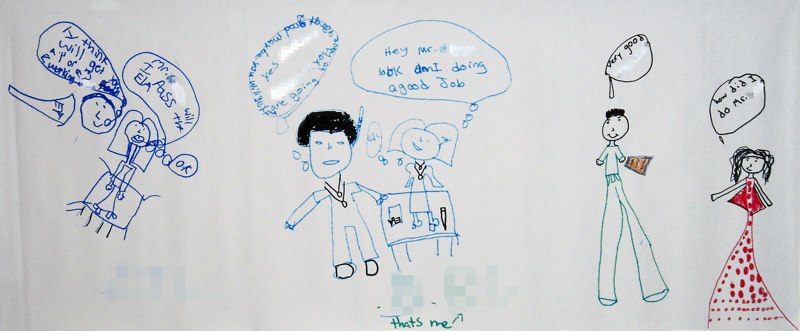Read on for an interesting characterization of accountability gone mad–the over-reaching of precision which ultimately destroys…From the February 2007 issue of Harvard Business Review:
The Folly of Accountabalism
Accountability has gone horribly wrong. It has become “accountabalism,” the practice of eating sacrificial victims in an attempt to magically ward off evil. The emphasis on accountability was an understandable response to some god-awful bookkeeping-based scandals. But the notion would never have evolved from a buzzword into the focus of voluminous legislation if we hadn’t also been lured by the myth of precision: Because accountability suggests that there is a right and a wrong answer to every question, it flourishes where we can measure results exactly. It spread to schools—where it is eating our young—as a result of our recent irrational exuberance about testing, which forces education to become something that can be measured precisely. When such disincentives as the threat of having to wear an orange jumpsuit for eight to ten years didn’t stop the Enron nightmare and other bad things from happening, accountabalism whispered two seductive lies to us: Systems go wrong because of individuals; and the right set of controls will enable us to prevent individuals from creating disasters. Accountabalism is a type of superstitious thinking that allows us to live in a state of denial about just how little control we individuals have over our environment.
Accountabalism manifests itself in a set of related beliefs and practices: It looks at complex systems that have gone wrong for complex reasons and decides the problem can be solved at the next level of detail. Another set of work procedures is written, and yet more forms are printed up. But businesses are not mechanical, so we can’t fine-tune them by making every process a well-regulated routine. Accountabalism turns these complex systems into merely complicated systems, sacrificing innovation and adaptability. How can a company be agile if every change or deviation requires a new set of forms?
Accountabalism assumes perfection—if anything goes wrong, it’s a sign that the system is broken. That’s not true even of mechanical systems: Entropy, friction, and manufacturing tolerances ensure that no machine works perfectly. Social systems are incapable of anything close to perfection, so if something goes wrong in one, that need not mean the system is broken. If an employee cheats on expenses by filling in taxi receipts for himself, the organization doesn’t have to “fix” the expense-reporting system by requiring that everyone travel with a notary public.
Accountabalism is blind to human nature. For example, it assumes that if we know we’re being watched, we won’t do wrong—which seriously underestimates the twistiness of human minds and motivations. We are capable of astounding degrees of self-delusion regarding the likelihood of our being caught. Further, by overly formalizing processes, accountabalism refuses to acknowledge that people work and think differently. It eliminates the human variations that move institutions forward and provide a check on the monoculture that accounts for most disastrous decisions. It also makes work no fun.
Accountabalism bureaucratizes and atomizes responsibility. While claiming to increase individual responsibility, it drives out human judgment. When a sign-off is required for every step in the work flow, those closest to a process lack the leeway to optimize or rectify it. Similarly, by assuming that an individual’s laxness caused a given problem—if so-and-so hadn’t been asleep at the switch or hadn’t gotten greedy or hadn’t assumed that somebody else would clean up the mess, none of this would have happened—accountabalism can miss systemic causes of failure, even, ironically, as it responds to the problem by increasing the system’s reach.
Accountabalism tries to squeeze centuries of thought about how to entice people toward good behavior and dissuade them from bad into simple rules by which individuals can be measured and disciplined. It would react to a car crash by putting stop signs at every corner. Bureaucratizing morality or mechanizing a complex organization gives us the sense that we can exert close control. But grown-ups prefer clarity and realism to happy superstition.
David Weinberger (self@evident.com), a marketing consultant and a coauthor of The Cluetrain Manifesto: The End of Business as Usual (Perseus, 2000), is also a research fellow at Harvard Law School’s Berkman Center for Internet & Society in Cambridge, Massachusetts. His book Everything Is Miscellaneous will be published in May by Times Books.

 Follow
Follow
